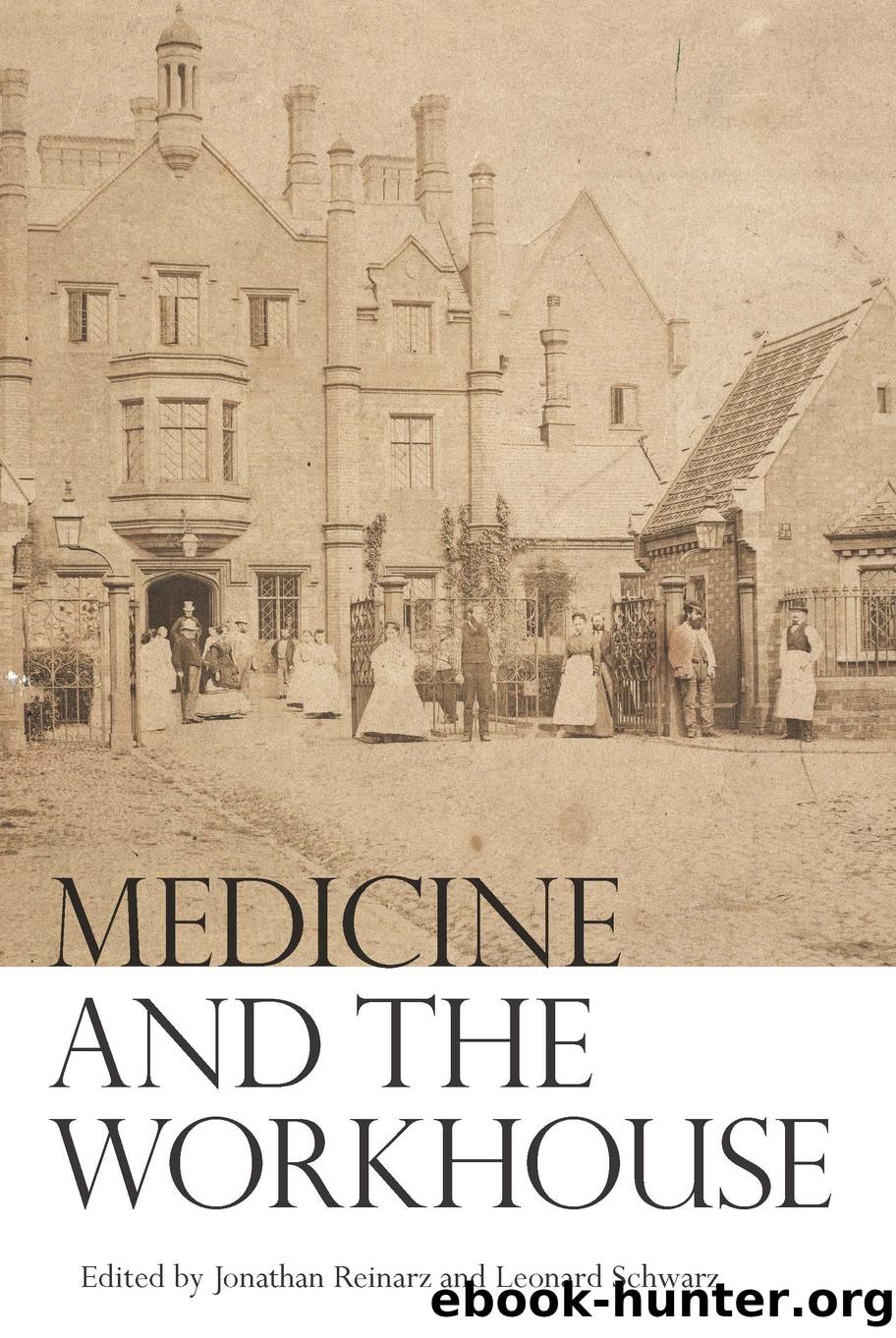Medicine and the Workhouse by Jonathan Reinarz

Author:Jonathan Reinarz
Language: eng
Format: epub
ISBN: 9781580468947
Publisher: Boydell & Brewer Group Ltd
Published: 2015-03-19T00:00:00+00:00
Establishment and Evolution, 1733â1852
The Birmingham workhouse was originally constructed in 1733, following the passage of a private act of Parliament in 1731. The original institution on Lichfield Street, originally said to resemble âa gentlemanâs house,â was built at a cost of £1,173 at a time when the population of Birmingham was just over twenty thousand.6 Minutes of the board of guardians reveal 369 inmates in May 1785 and 442 at Easter 1812.7 At the end of the eighteenth century, 300 children were residing in placements throughout Warwickshire because of lack of accommodation in the workhouse.8 An Asylum for the Infant Poor was therefore erected on Summer Lane in 1797 to bring them under one roof within Birmingham. The number of inmates in the workhouse itself did not surpass 500 until after 1847. Before 1733 the parish guardians had annually dispersed between £500 and £1,000 annually to the poor and presumably convinced many taxpayers that this was a reasonable investment. At the time it opened in 1734, and for decades thereafter, all sick pauper inmates would have been mixed with healthy residents in an institution famously referred to as a âprison.â
By 1766, in a decision that would more clearly emphasize the institutionâs health care role, an infirmary wing was first constructed at a cost of £400 and a workshop wing was also added in 1779, allowing the workhouse to accommodate around 400 inmates.9 The capacity of the infirmary is uncertain, but only 37 adult patients were being cared for in May 1785.10 Four years later the accommodation for sick paupers was felt to be so inadequate that a detached building was eventually erected in 1793, as the âTown Infirmaryâ at a cost of £1,475.11 By August 1818, a total of 94 patients were being treated in the infirmary, the number increasing steadily to reach about 233 by 1847.12 New buildings were also erected in 1835 as the âLunatic Branch of the Town Infirmary.â In April that year, the new buildings accommodated 36 âidiotic casesâ and patients suffering âmental aberration,â who would otherwise have been transferred to a lunatic asylum, but 25 insane women remained in the old apartments. As the workhouseâs role in the treatment of mental illness became more important, the number of patients had increased to 78 by 1847.13 This contrasts with another huge provincial urban workhouse in Manchester, which in 1841 housed 1,261 paupers with 268 in sick wards, but only 10 lunatics. Debates about relocating the institution to the healthier, more airy site of Birmingham Heath emerged before the end of the eighteenth century.14 There is evidence of some reconstruction and patching up in these years, but few records document the medical work that was undertaken by staff at the time.
The most valuable resource that discusses medical work in Birmingham in these years, including that undertaken at the workhouse, is Medical Miscellany, a publication by a Birmingham surgeon, Thomas Tomlinson. One of the first provincial practitioners to deliver a series of anatomical lectures, Tomlinson published his reflections
Download
This site does not store any files on its server. We only index and link to content provided by other sites. Please contact the content providers to delete copyright contents if any and email us, we'll remove relevant links or contents immediately.
Cecilia; Or, Memoirs of an Heiress — Volume 1 by Fanny Burney(32022)
Cecilia; Or, Memoirs of an Heiress — Volume 3 by Fanny Burney(31436)
Cecilia; Or, Memoirs of an Heiress — Volume 2 by Fanny Burney(31380)
The Great Music City by Andrea Baker(30641)
We're Going to Need More Wine by Gabrielle Union(18606)
All the Missing Girls by Megan Miranda(14598)
Pimp by Iceberg Slim(13717)
Bombshells: Glamour Girls of a Lifetime by Sullivan Steve(13665)
Fifty Shades Freed by E L James(12886)
Talking to Strangers by Malcolm Gladwell(12814)
Norse Mythology by Gaiman Neil(12786)
For the Love of Europe by Rick Steves(11331)
Crazy Rich Asians by Kevin Kwan(8861)
Mindhunter: Inside the FBI's Elite Serial Crime Unit by John E. Douglas & Mark Olshaker(8665)
The Lost Art of Listening by Michael P. Nichols(7125)
Enlightenment Now: The Case for Reason, Science, Humanism, and Progress by Steven Pinker(6852)
The Four Agreements by Don Miguel Ruiz(6284)
Bad Blood by John Carreyrou(6255)
Weapons of Math Destruction by Cathy O'Neil(5801)
